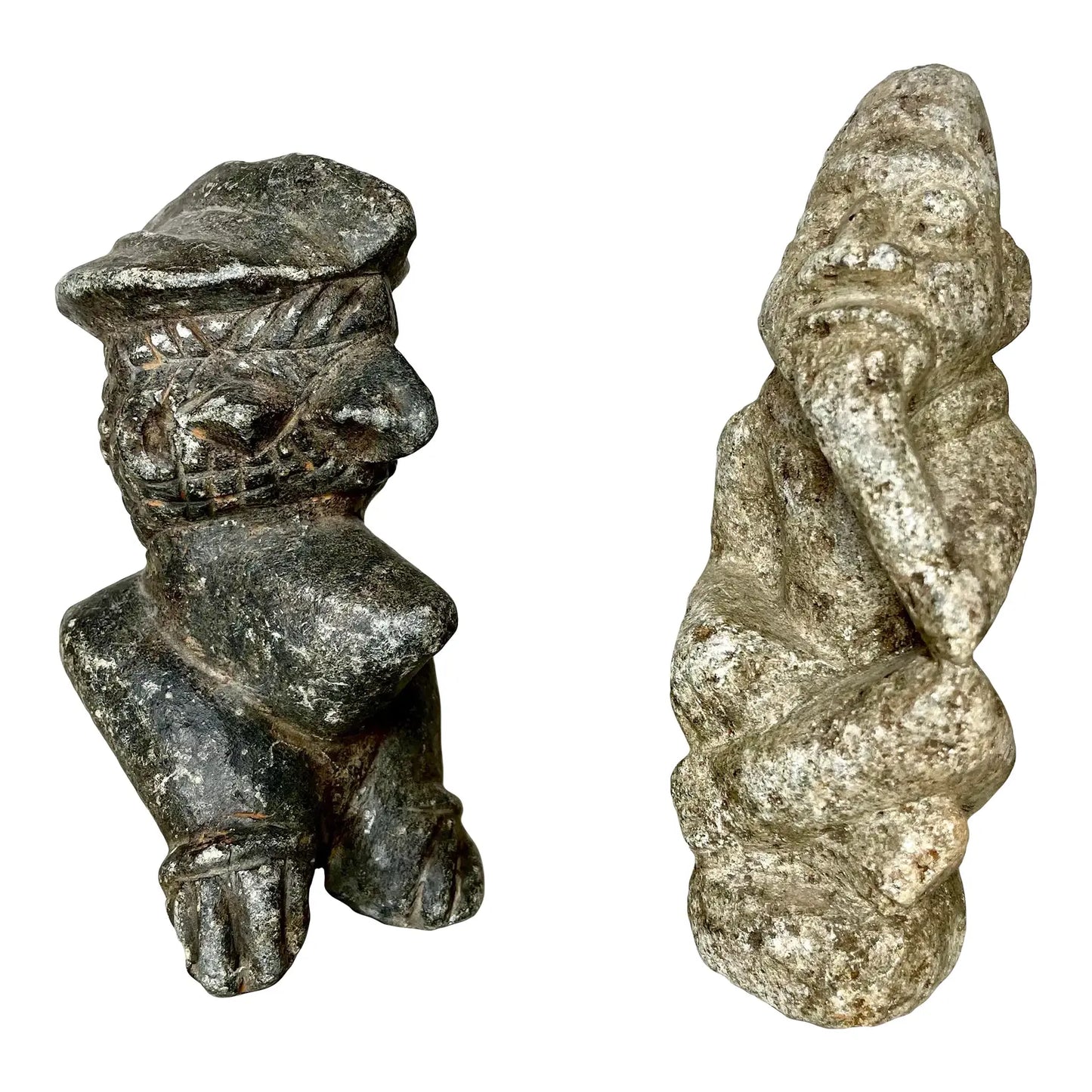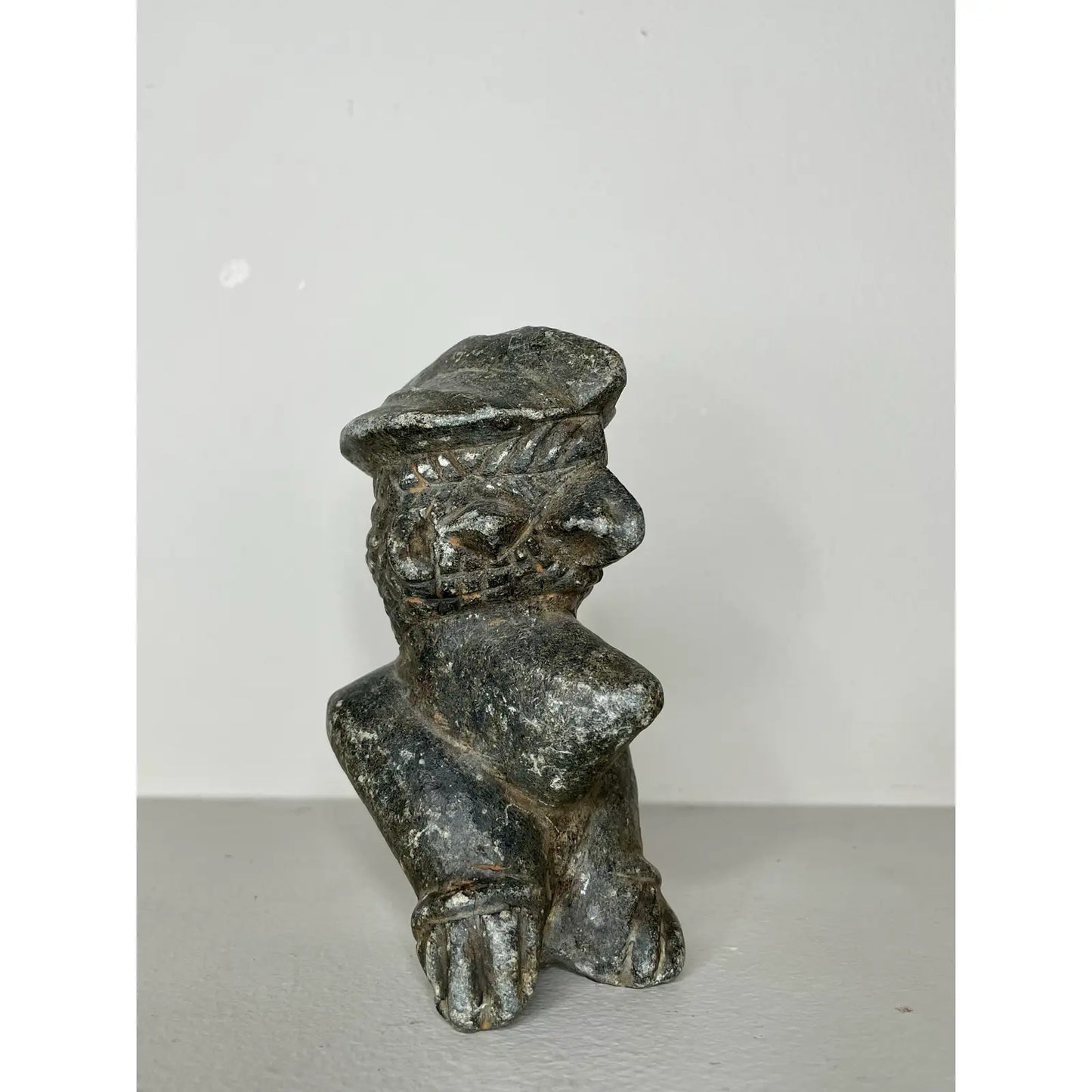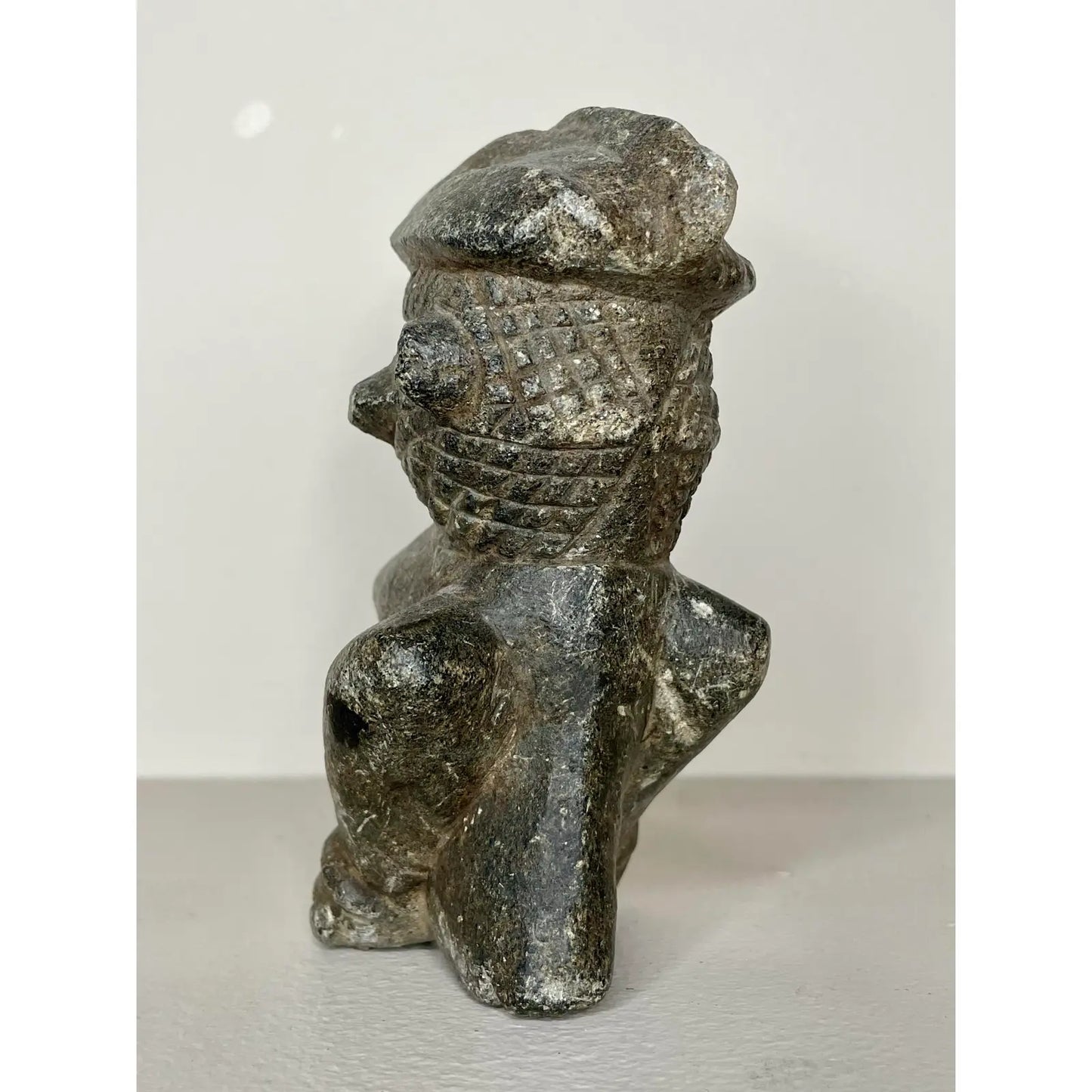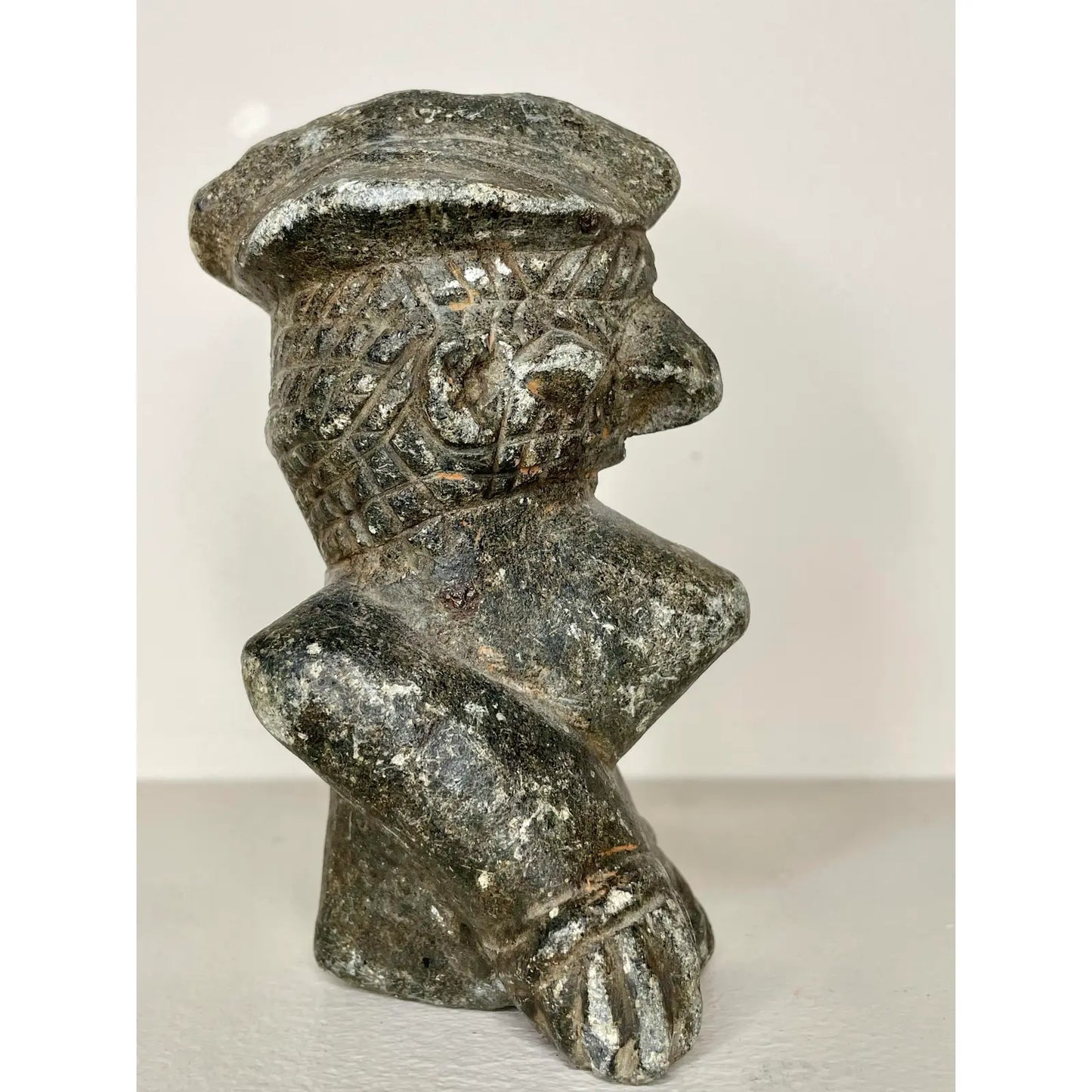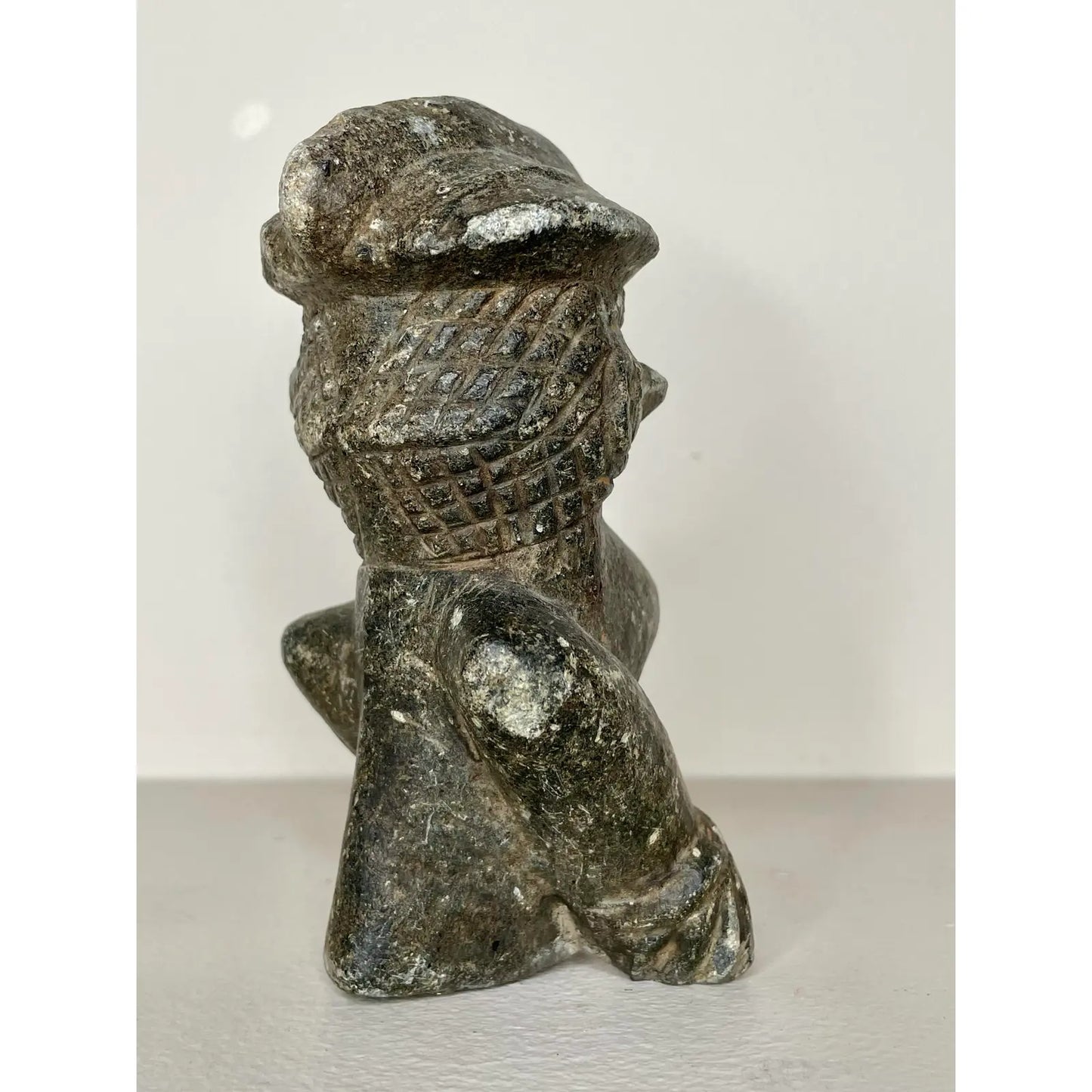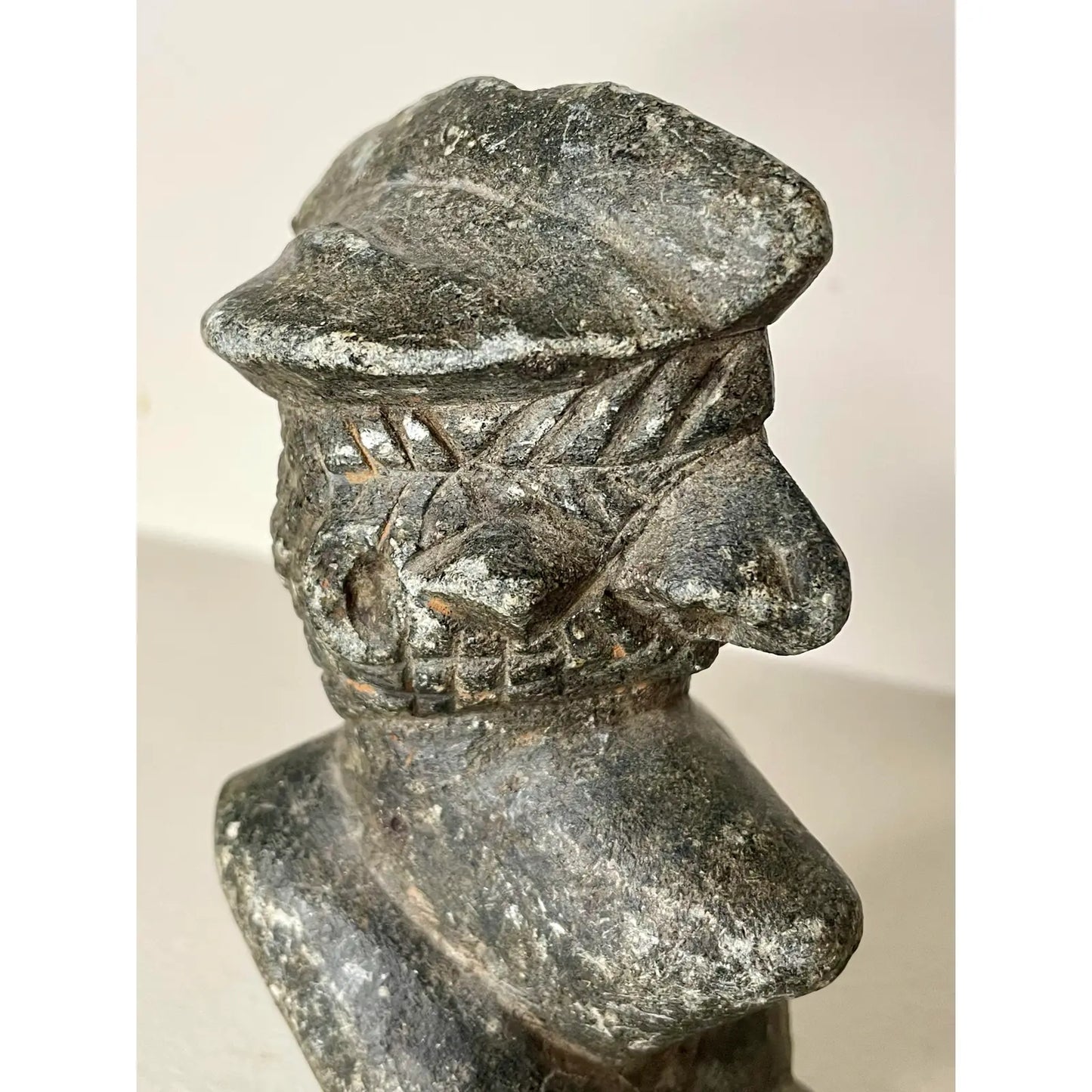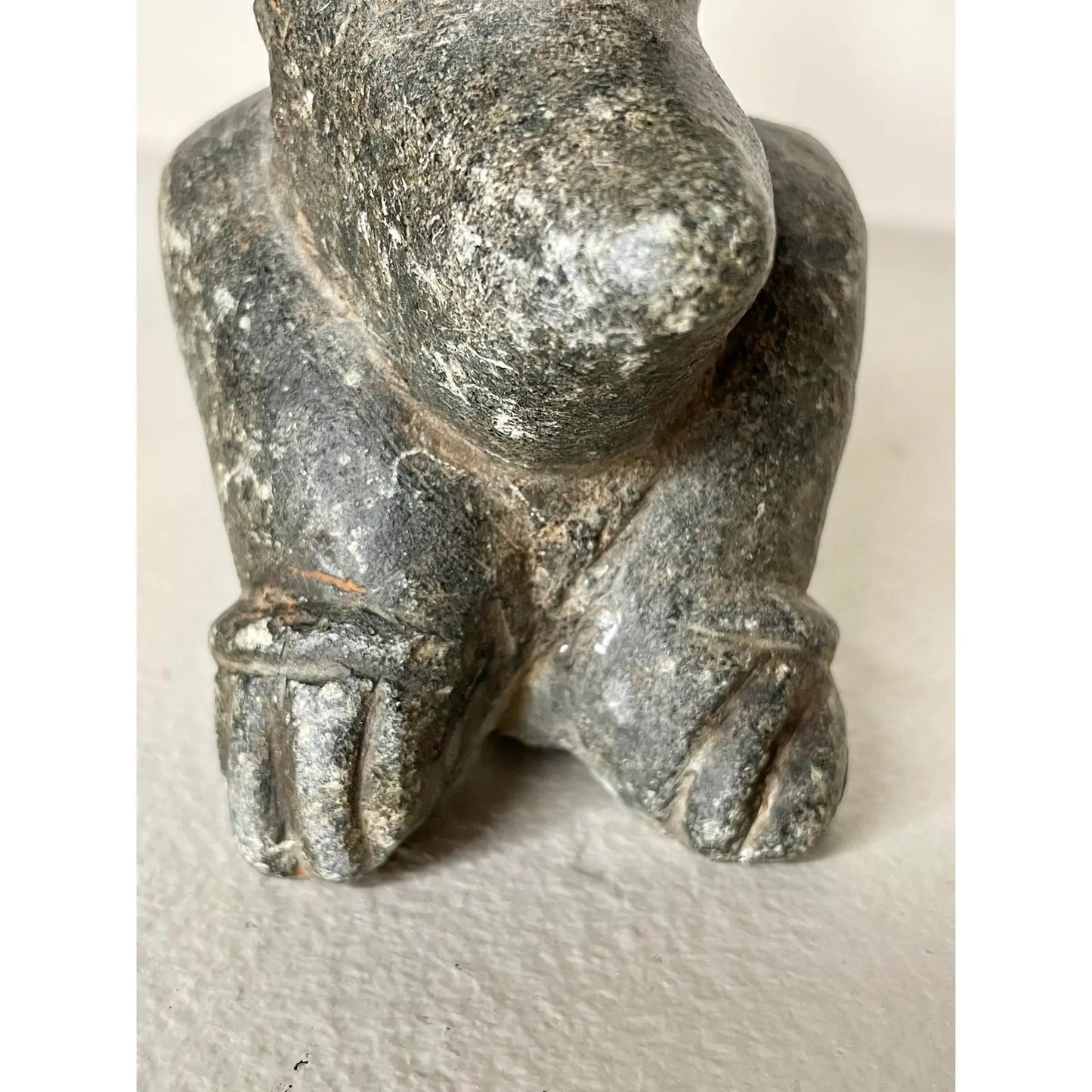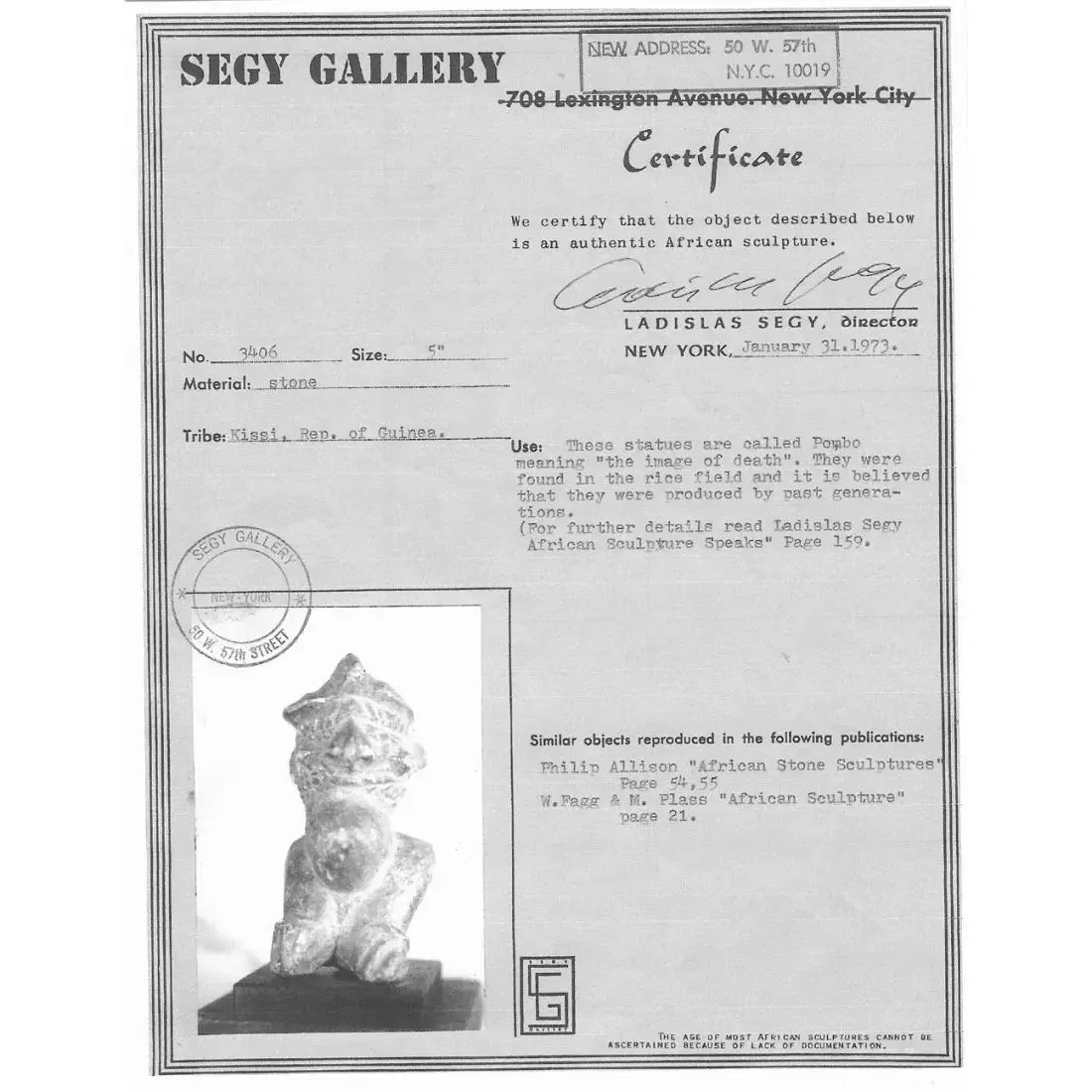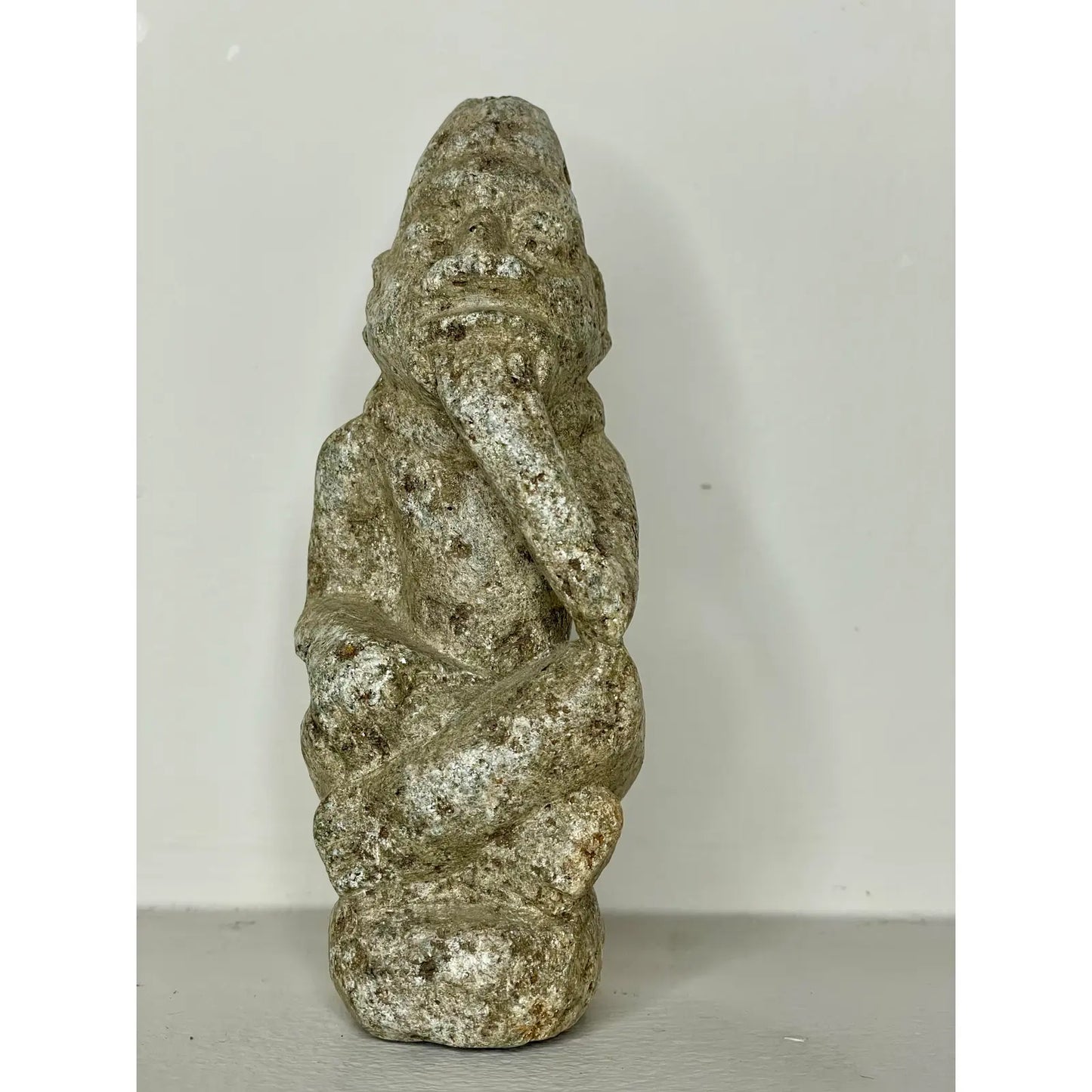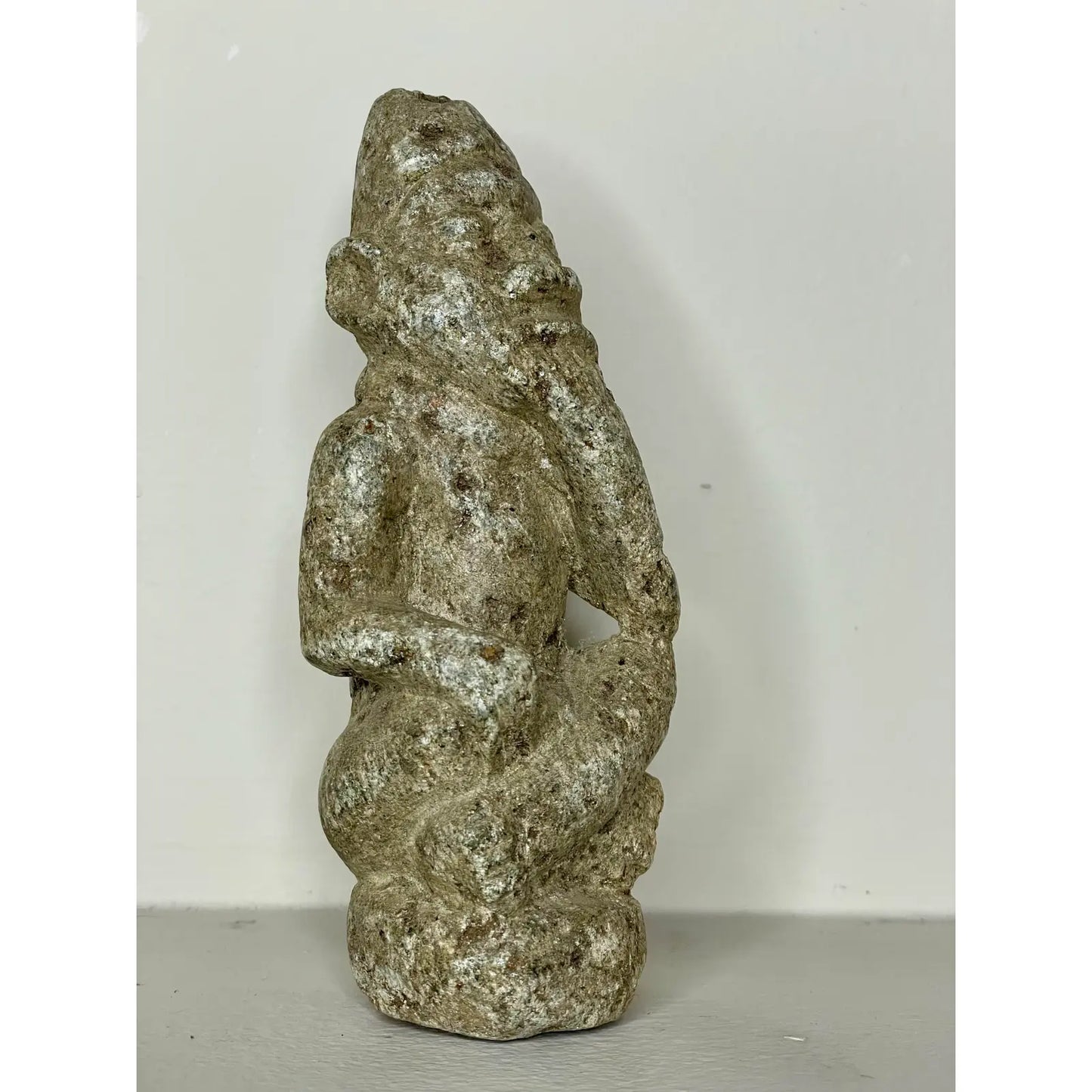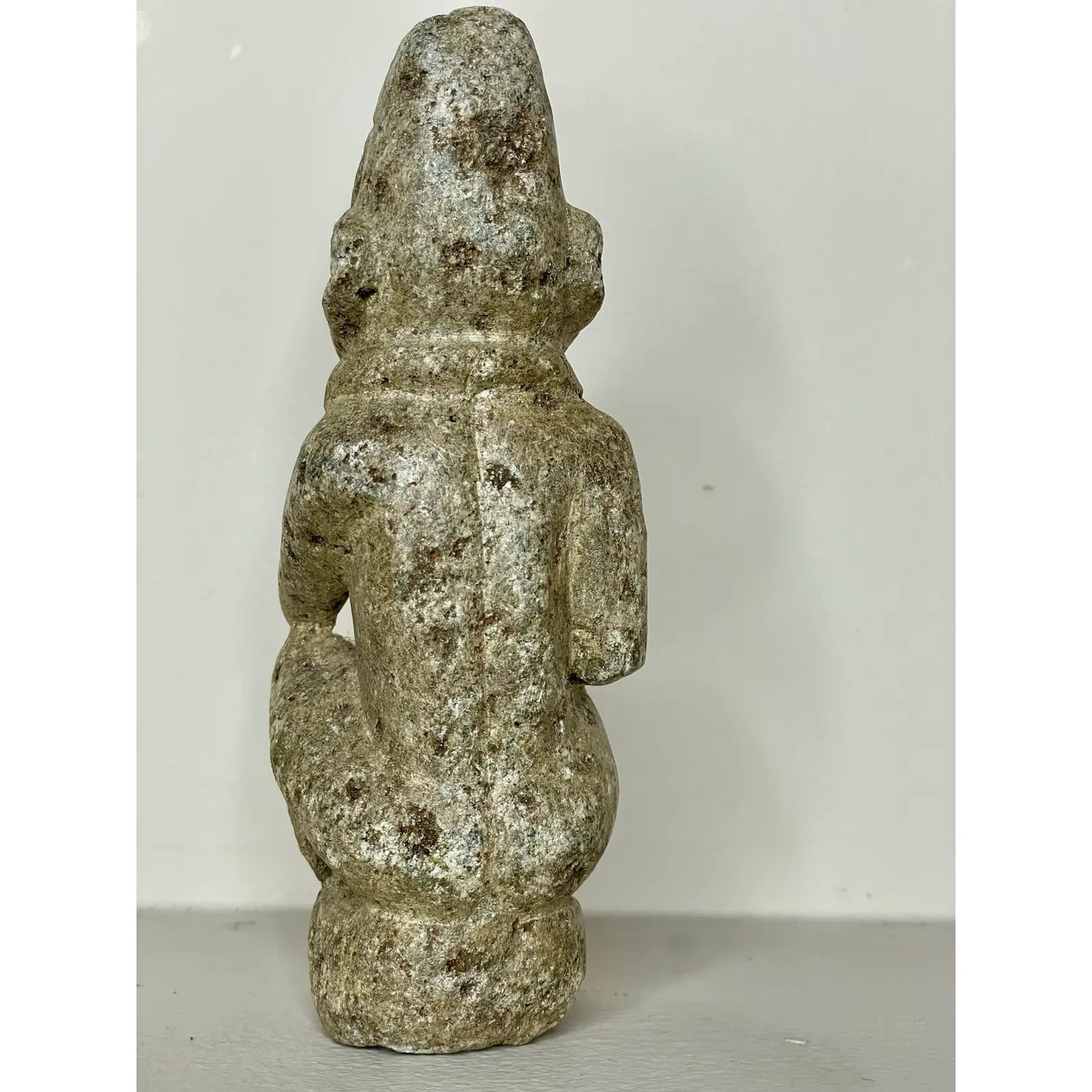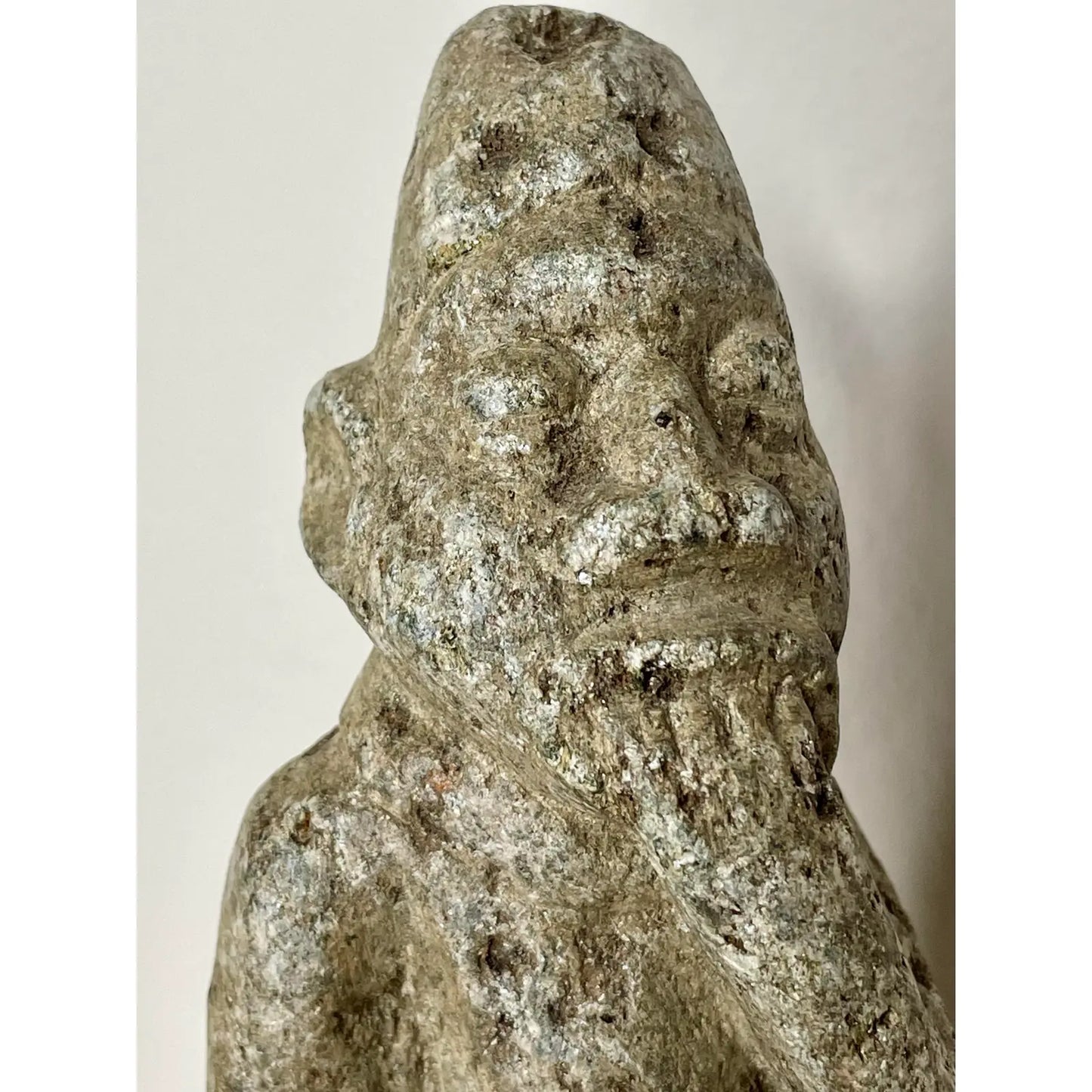Road East Period + Modern
African Nomoli Sapi Stone Figures
African Nomoli Sapi Stone Figures
Couldn't load pickup availability
A pair of stone figures from the Sapi or Sherbro people of Sierra Leone and Liberia. Among the oldest works of art made in the 15th century and earlier prior to European contact.
Distinctive anthropomorphic and distorted forms, The Mende, who now occupy Sierra Leone and adjoining regions of Guinea and Liberia, call these stone images nomolisia (sing. nomoli ) which means ‘found spirits.’ For generations farmers have excavated these figures from their rice fields and palm groves. The figures commonly become the focus of shrines and other assemblages of sacred materials and are regarded as being the representatives of the previous owners of the land. They are given offerings and asked to bring about abundant harvests. Unsuccessful, ineffective figures may be cursed or whipped.
The Kissi people of Guinea refer to this carving as pombo, which means “the deceased”. Similarly, the Mende people use the word nomoli, which means “found spirit”. Regardless of where they’re found in West Africa, these stone carvings are treated with reverence.
The pair comes from the collection of an American couple, one a successful apparel and fashion manufacturing entrepreneur and the other a highly regarded artist. One of the figures was purchased from famed African art dealer Ladislaus Segy at the SEGY Gallery in New York in 1973. It is unclear of the further provenance of the second.
Measuring 5.5" and 4.75" in height
Share
